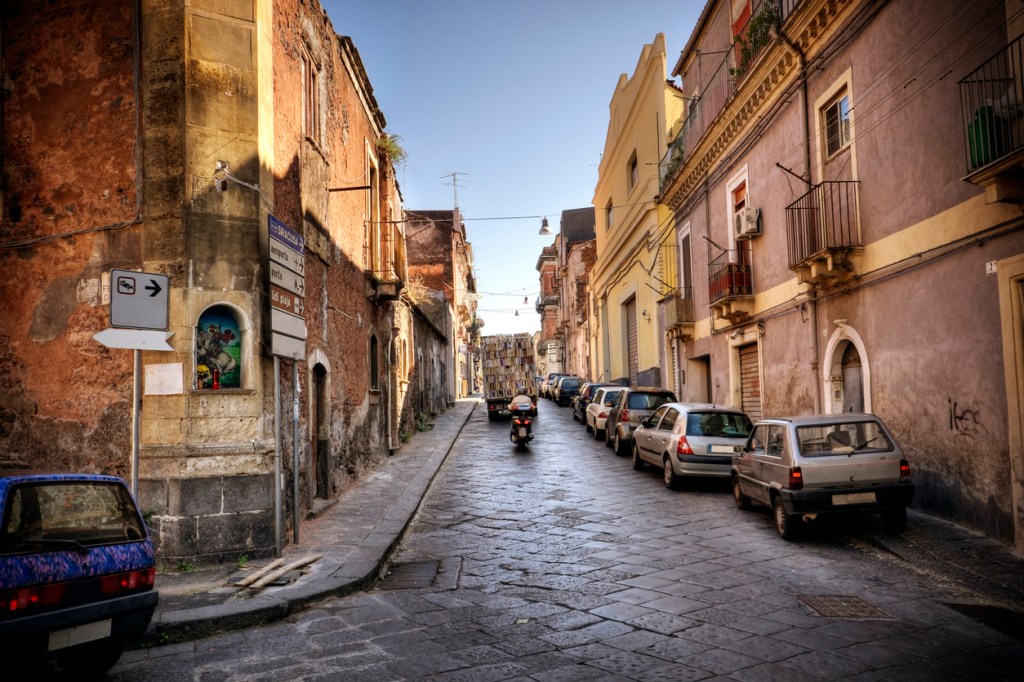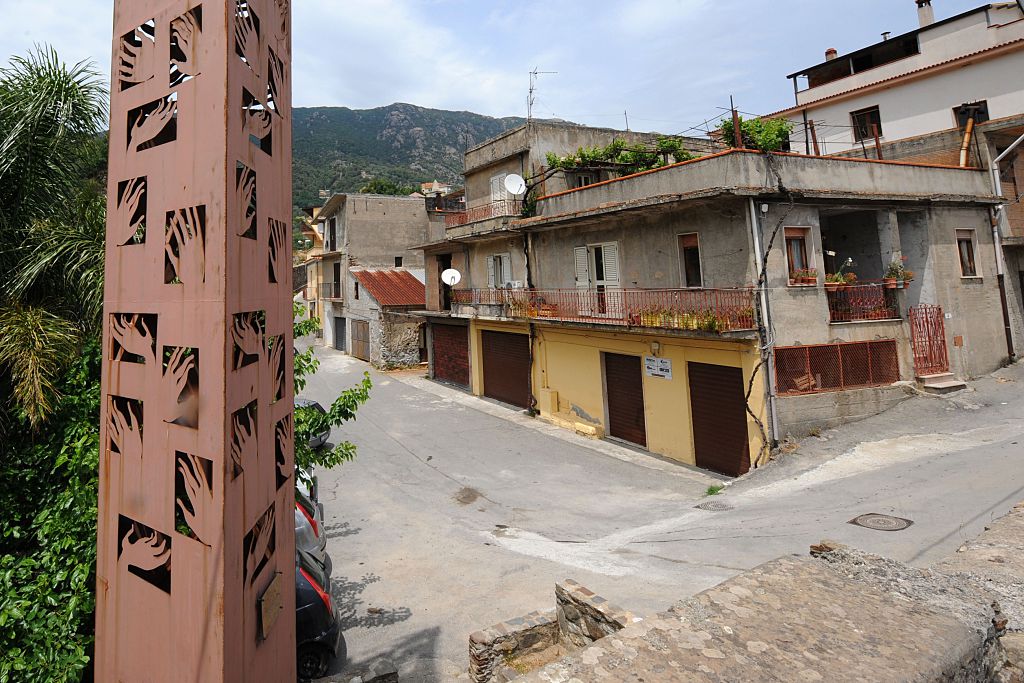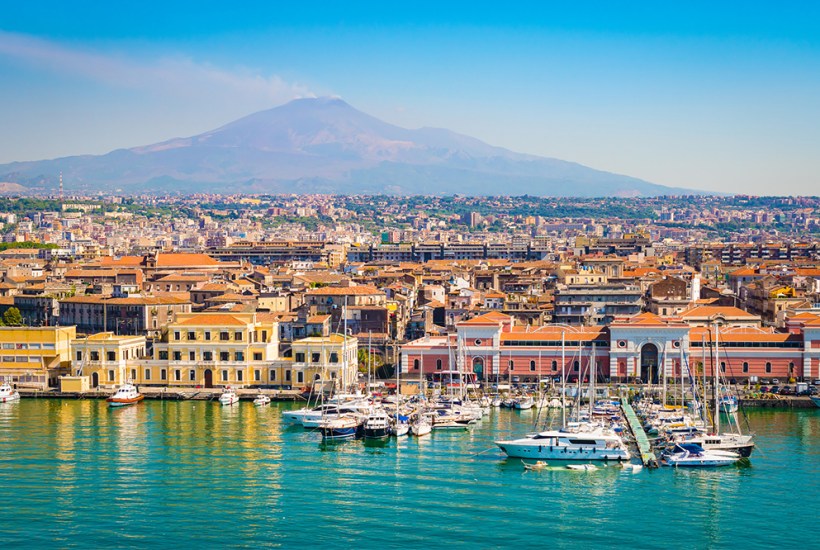There are plenty of reasons to visit Catania in Sicily, and some of them are positive. The town is impressively ancient – dating back to the 8th century bc. It boasts a handsome, lavishly voluted Baroque core. A few steps from that main piazza you can find the picturesque fish market, the Pescheria, which sequins the black tufa cobbles with silvery fish scales, and has been selling inky squid for centuries.
What else? The city has a striking location, with Mount Etna squatting on the horizon, apparently benign, but occasionally sending out chuffs of smoke to remind you of its menace, like a volcanic version of Tony Benn, puffing his pipe at the edge of British politics. In the cafés you can eat the breasts of Saint Agatha – that’s a kind of cake, celebrating the breasts torn off a defiant Christian virgin around ad 300 (I’m eating one breast as I write this). Finally, the food is properly good, which supports my long-held belief that the best food in Italy is commonly found in the poorer, less touristy corners.
And there’s the rub. Catania is poor. It is grimy, dusty, sooty, scattered with litter, surrounded by dystopian suburbs, and graffiti is scrawled over graffiti every inch. And it is edgy: by some reckonings it is the most dangerous city in Europe, per capita, certainly in the top ten, thanks to pickpocketing and mugging at the low end of the scale and Mafia grift and murder at the top.
 An alley in Catania (iStock)
An alley in Catania (iStock)
In short, Catania is a terrible town, and that is why I love it. Because this is my guilty travel writer’s secret: show me a poor, benighted, sad, miserable, remote, homicidal, melancholy, weird, inaccessible, hostile, freezing, burning, druggy, or frankly appalling town, and I’ll show you a destination that I can really get behind, even love, for one reason or another.
These places can tell you more about a nation than their prettier cousins. What they teach will likely be dark
In my years of wandering, I’ve encountered a few. I’ve had a properly good time in Blackpool. I’ve got excellently drunk in Tijuana. I’ve had sparkling oysters in Luderitz, Namibia, in a restaurant which was perfectly sited for viewing the location of Germany’s first Holocaust.
Among the litany of brilliant weirdness and mesmeric despair, a few places nonetheless stand out. Calcutta is one. In just 24 hours there, I saw a fatal car crash, my first leper, a huge brawl in a street, families living in sewers, troops of children living under railway platforms, and a corpse being burned on a ghat even as a naked old man died three metres behind. It was shocking and sad, but yes: compelling.
Another candidate is Colorado City, on the frontier between Utah and Arizona. It’s where the fundamentalist Mormons live: the polygamous types with multiple wives in Stepford dresses. The enormous houses have no windows facing the streets (this is to hide the many wives on benefits from the Feds, it is said). The atmosphere is brooding, insane and thunderous. And yet Colorado City also has one of the best cheese shops west of the Rockies.
Then there’s Plati, in the Aspromonte mountains of Calabria (the toe cap of the Italian boot). My one and only visit was about a decade ago. I was touring the Aspromontes seeking locations for a novel. I was doing my favourite thing of simply tootling about, seeing what I might find, and I saw a sign for ‘Plati’. Perhaps the fact the sign was riddled with gun shots should have given me the hint: turn back. Obviously it had the opposite effect, as I eagerly pressed on.
 Plati, southern Italy, in 2015 (Getty Images)
Plati, southern Italy, in 2015 (Getty Images)
It is hard to describe the atmosphere as a stranger enters Plati. What I sensed as my obviously rented car drove slowly through the streets wasn’t so much hostility, more a kind of astonished contempt.
At first, I was minded to stop for a coffee. But the glares from every single person, sitting on their impoverished concrete porches, convinced me this was a bad idea. Also, the lack of any cafés. Plati seemed to consist entirely of angry people in half-built houses with abandoned fridges on the roof. Flooring the pedal, I pressed through; my car was actually chased out of town by kids throwing stones. From a cemetery.
As soon as I was clear of Plati I pulled over in a wooded glade and did a quick Wiki check. It turned out that I had just inadvertently done a tour of one of Italy’s most notorious towns. Plati is the nerve centre of the Calabrian organised crime network: the immensely powerful ’Ndrangheta – who make the Sicilian Mafia look like wimps. And as for Plati’s apparent poverty, that’s a deliberate deception; it is possibly the richest town in all Italy, thanks to crime. Plati is also known, Wiki told me, as the ‘cradle of kidnapping’, with tunnels for hiding captives stretching under the woods where I’d just parked my car. Even as I read this my car was surrounded by local vehicles, really encouraging me to leave. I left.
But you know what, I’d go back tomorrow (probably with a well-connected friend). Because I kind of loved it.
Why do I love terrible towns? There are easy answers. They will probably have few tourists, so you can feel adventurous and pioneering – and hotels will be cheap. They often have the thrill of danger, in various forms. They are truly exotic: especially for a jaded travel gourmet who’s been every-where. Also, I have found that terrible towns often do one or two particular things superbly, as if to make life somehow tolerable, despite the horrors.
I also believe terrible towns can sometimes tell you more about a region, a nation, a civilisation, than their prettier cousins. What they teach will likely be dark, but it needs to be confronted.
So what does Catania tell me? In the centre of the city there is a little round piazza. At one side is maybe the filthiest opera house in the world, on the other side is a faded fascist building called the House of the Mutilated. In the middle is a struggling pizzeria with a waiter hoping desperately for more Chinese or American tourists to keep the show on the road, just one more season. In short, it feels like an emblem of all Europe, in one pistachio nutshell. And, even if I’m wrong, the breasts of Saint Agatha are delicious.
Got something to add? Join the discussion and comment below.
Get 10 issues for just $10
Subscribe to The Spectator Australia today for the next 10 magazine issues, plus full online access, for just $10.
You might disagree with half of it, but you’ll enjoy reading all of it. Try your first month for free, then just $2 a week for the remainder of your first year.








Comments
Don't miss out
Join the conversation with other Spectator Australia readers. Subscribe to leave a comment.
SUBSCRIBEAlready a subscriber? Log in